The Clevo P870DM2 / Mythlogic Phobos 8716 Laptop Review: DTR With GTX 1080
by Brett Howse on October 27, 2016 2:00 PM ESTWireless
Mythlogic offers a couple of different network adapters for the Phobos 8716. You can get the Intel Dual Band Wireless-AC 8260, or the Killer Wireless-AC 1535. The laptop also features two Killer E2400 Gigabit network adapters. If you go with the Killer solution, like the review unit, you’ll get access to the Killer software suite, as well as the DoubleShot Pro which allows some traffic to be done over wireless, while other traffic is done over the Ethernet. Killer, as a company, focuses on maintaining gaming performance regardless of the other networking activities are going on, and their software can help with gaming latency. It also features MU-MIMO, which is not a feature found on the Intel 8260, although it is supported in the newly announced 8265 model.
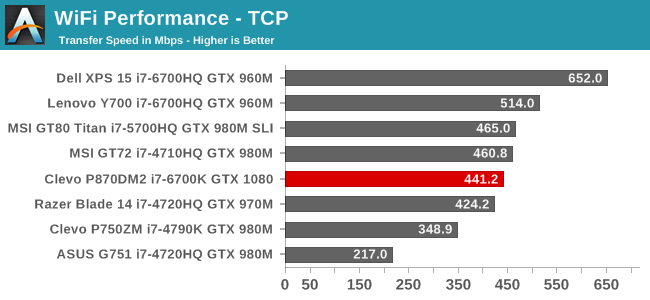
After some initial issues with the Killer card, some updated drivers really helped out. I was only averaging about 120 Mbps on our test download, but a new set of drivers from Killer brought the result up to 440 Mbps, which is much closer to what I was expecting, having tested other laptops with this same card before.
I also had a few network disconnections on the old driver, so if you do have this card make sure you update the drivers from the Rivet site, and not through Windows Update which doesn't have the latest version.
The same test was performed over Ethernet, and it downloaded at over 900 Mbps.
Audio
The Clevo P870DM2 / Mythlogic Phobos 8716 comes with the SoundBlaster X-FI MB5 onboard audio, and for a look at this solution check out Creative’s page. The Creative software gives a bunch of gaming settings to play with, as well as different profiles to tune the audio to your liking. There’s EAX settings, and even a Scout Mode where you can have the system increase the sound of enemy players so you can hear them from further away. I’m not sure if that’s cheating, but it’s interesting.
The speakers themselves are mounted beside the hinge, and fire upwards which is always a benefit. The sound quality is pretty decent for a notebook, and it is certainly loud enough, with a measured volume of 90 dB when playing back music, with the SPL meter 1-inch over the trackpad.
The Clevo also has a full assortment of audio jacks on the left side of the notebook, much like a desktop. Instead of a single headset jack, there is a headphone jack, a microphone jack, a line-in jack, a line-out jack, and also a S/PDIF output shared with the headphone. If you use the HDMI, you can also get 7.1 output. It would be nice to have these jacks color coded though to make it easier to determine which is which, when trying to plug in headphones in a dim room. There was no issues once plugged in though, and the headphones sounded great.
Thermals and Noise
All of this performance is not going to be very useful if the notebook can’t keep the thermals in check. Luckily the Clevo / Mythlogic laptop is a bit of a beast, tipping the scales at over 12 lbs, so there is plenty of room for fans, and lots of room for heatsinks. To test the thermal capabilities, Rise of the Tomb Raider was played on Very High settings, for about an hour.
There’s a few things to note in the data. First, the GPU temperature rises to the 90°C limit and never exceeds it. Second, the GPU core clock goes up to about 1900 MHz in boost, until it gets thermally limited and falls down to around 1600 MHz. It isn’t throttling at this point, but moving into the steady state. It never falls below the base clock, but is instead likely hitting its TDP limit for the mobile variant of the GPU. Finally, Rise of the Tomb Raider can eat up huge amounts of RAM, so if you’re going to play this game on Very High, be sure your GPU has more the 4 GB.
On the noise side, the fans are on continuously, but when working on the desktop, they never get too loud unless you are pushing the laptop. At idle, the sound level is 39.5 dB(A) with the SPL meter an inch over the trackpad. Some gaming laptops can be screaming jet engines when under load, but this one is not, and even after an hour of gaming the SPL level was only 49.5 dB(A). You would still likely want to wear headphones when gaming, but the laptop doesn’t get hot and it never gets overly loud. This is with the fans at their default settings.
Software
Most gaming laptops come with a bit of software for things like macros, and the Mythlogic Phobos 8716 has a full compliment of utilities, but no extra things like you’d see on mainstream OEM laptops. It’s refreshing to see a clean experience, and it’s worth giving a shout out to the crew at Mythlogic for avoiding that trap. What they do include is all purposefully put there.
The basics are the utilities like the Killer networking, GeForce Experience (which I am not a fan of having to log into now in order to do anything – thanks NVIDIA), and the SoundBlaster software for configuration of the installed hardware. But Mythlogic also adds their own tools to do a couple of things.
Mythlogic has a control center, which allows you to change the device profile quickly among quiet, power saving, performance, and entertainment modes, all which set the display and fan settings for those modes. You can also set the volume, and turn off the display. Fan speeds can be configured with some built-in profiles, or you can do a custom one, or just set them to maximum, which is going to give you some more headroom for the internal components, but at 65 dB(A), it’s not very enjoyable for day to day use. The software works fine, although it’s not the prettiest utility around.
They also have their FlexKey software, which is used for a couple of purposes. First, you can use it to customize the keyboard and back panel lighting. Second, it can be used to track statistics of which keys you use, and you can set it to record and stop as needed. Finally, you can use it to record and use macros. There are no dedicated macro keys, so they will have to be bound to other keys on the keyboard, or mouse.
The last bit of software is for those who want to overclock. Since the review unit is an i7-6700K, the CPU is unlocked, and the laptop also supports GPU overclocking. To set up the CPU, they have included the Intel Extreme Tuning Utility, which allows you to do some very fine grained controls of the CPU and memory. On the GPU side, Mythlogic has a tool to change the core and memory clocks on that, as well as adjust the fan speed as needed. The overall fan speeds can also be set to the Overclock mode in their control center.
Since I am not into overclocking, I shied away from digging into this and possibly breaking something. Plus, it would be difficult for me to see needing more performance than this system already gives at stock levels. However there’s a whole community who is into extracting the maximum performance, and Mythlogic has provided the tools for you to do this if you are into that.


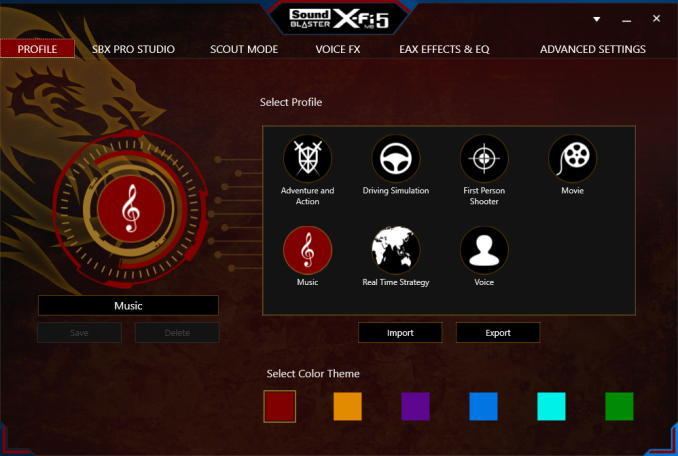
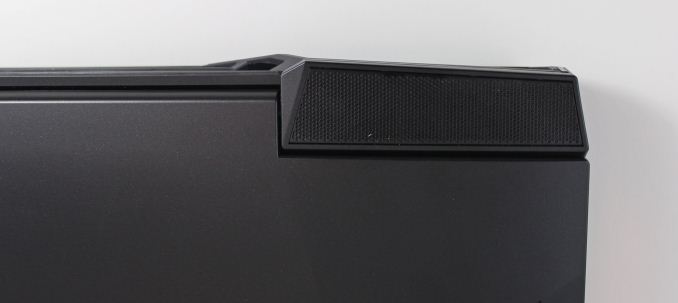
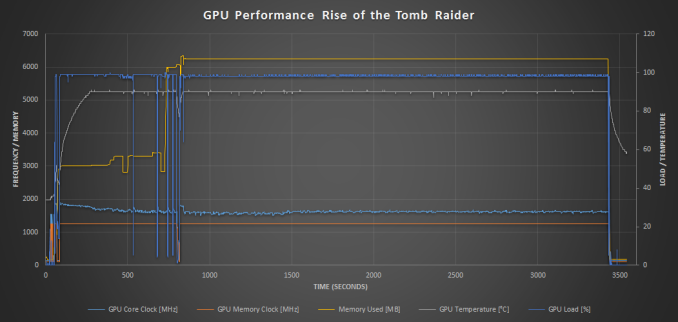
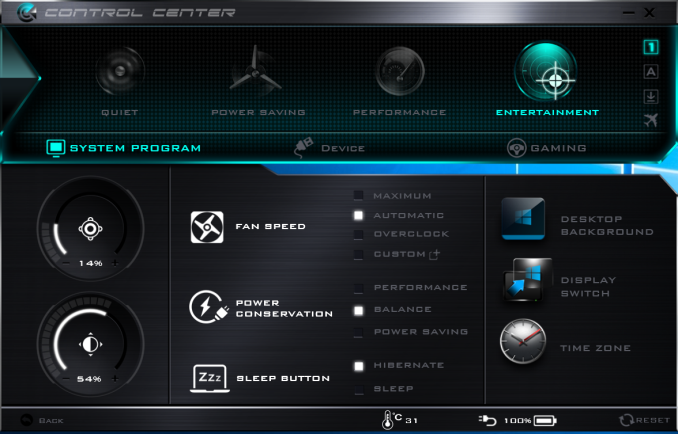
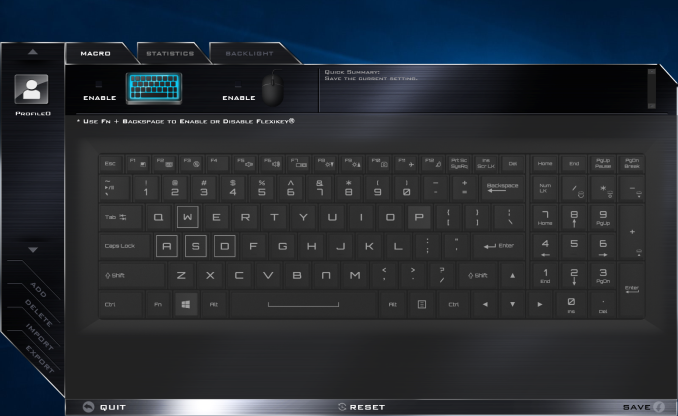
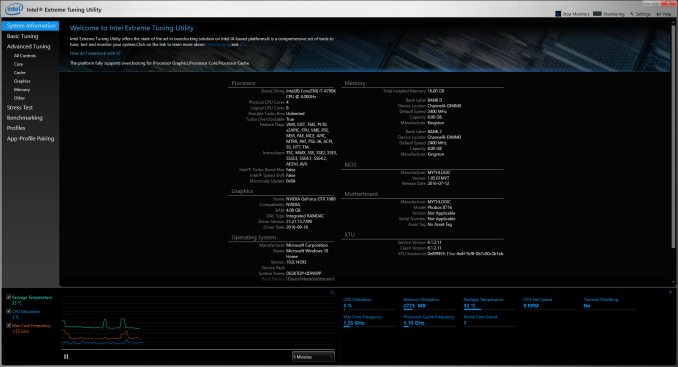
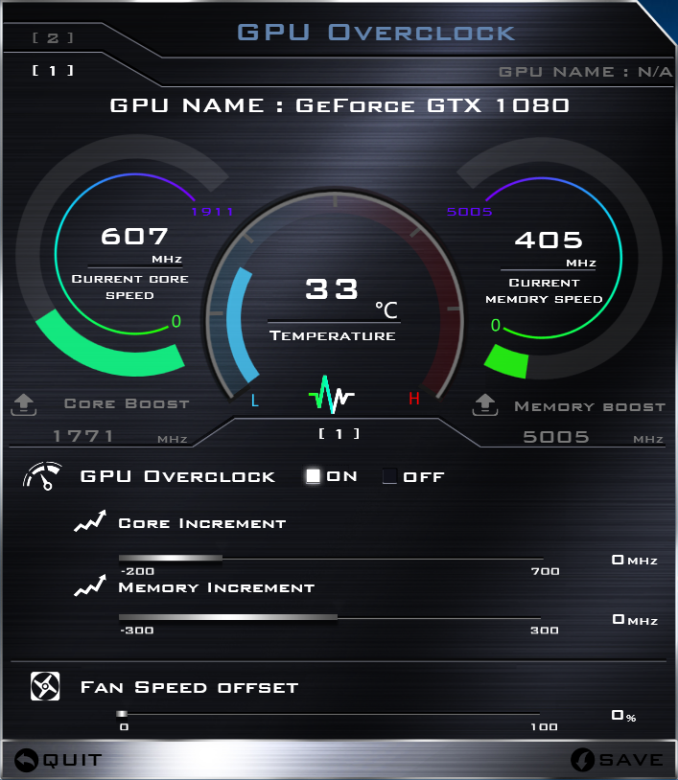








61 Comments
View All Comments
ZeDestructor - Saturday, October 29, 2016 - link
You should give it a go in current versions of VMware.. I hear decent things about it...chezfromage - Thursday, October 27, 2016 - link
As it turns out, I fit into this machine's target market (I'm paralyzed from a spinal cord injury, so I need a laptop, but I also do programming and rendering, so I need an overpowered monstrosity), and I just got the Sager version of this laptop (NP9873) a few weeks ago. First of all, I chose some higher-end specs than the reviewed device: 4K display; dual 1080s; a 512 GB 950 Pro primary SSD (plus another SSD and two HDDs); and the Intel 8260 wireless option. It has the same 6700k. The machine truly is a monster - with the dual 1080s, everything I've thrown at it so far runs 60+ fps set to 4K and ultra settings, albeit sometimes dropping down to FXAA on extremely demanding games (huge difference vs. MSAA on XCOM 2, for example). That low-ish number for Civ 6 as cited in the article has been fixed with an NVidia driver update, btw.Regarding stuff mentioned in the article and other comments, yes, the included control center and overclocking software is Clevo-developed and is the same on my Sager. It works well and lets you tweak values on the fly... Not that you really want to that much. Adjusting the core multipliers even just to 4.4ghz makes the fans kick in at full blast, which is insanely loud. Also, yes, the dual power adapter requirement is inconvenient but mildly hilarious; don't pretend this machine is particularly portable, although it's much easier than carting around a desktop with the same specs, which I think is the point.
Elsewhere, yup, the keyboard's a bummer, but the touchpad is surprisingly good! I can't physically perform most gestures (SCI hand paralysis), but one- and finger functions work flawlessly, and while the L/R buttons aren't the best, at least they're there.
Anyway, that's my experience with the dual-GPU option, if anyone was wondering. Any questions? Did I forget anything?
Edit: The 512GB 950 Pro is indeed way faster than the 256GB model - even with AES encryption via Veracrypt, it still benches at 2600r/1600w.
kmmatney - Thursday, October 27, 2016 - link
I've been using a 17" laptop for the last 10 years, and am a big fan of the DTR, but this is ridiculous. This should be a new category called GRR (Gaming Rig Replacement). I've had no trouble toting my laptops around, but mine are more in the 7-8 pound range. The Dell Alienware systems are good mix of gaming and portability IMO, but even a $500 Dell Inspiron can be a DTR these days,tagi123 - Friday, October 28, 2016 - link
It sure is ugly - as are all these 1080 laptops..s.yu - Tuesday, November 1, 2016 - link
I would love a review of the Blade Pro from Anandtech.Laststop311 - Thursday, November 3, 2016 - link
Such a narrow niche for a product like this. I mean really. speccing this thing out nice you are going to hit 3500-4000. You can simply get an awesome performing 20-25 poundish mid atx desktop and spend 2500 dollars and have a much easier time upgrading it and cleaning it and throw the remaining 1500 into a very very nice ultrabook with 10+ battery hours and all the performance ud ever need for on the go lap use. At least I think the majority of people would rather spend their money that way.Laststop311 - Thursday, November 3, 2016 - link
I can't be a hater tho I actually did use to own an alienware m18xr2 fully specced out with the gtx 880m sli. But this was when i went to a lot of LAN gaming parties and I still had to lug around my 22" high refresh gaming monitor and mechanical keyboard and mouse along with it.That's when I realized why am I bothering trying to be portable with a DTR. Nowadays you can build mini-itx systems that weigh only a bit more than this system with internal power supplies and much easier maintenance for much less money. Infact the ncase m1 mini-itx case only weighs 6 pounds before you add components. a Mini itx mobo can be had for 1.25 pounds an m2 ssd + 2.5" ssd barely adds any weight. a decent air cooler and fan in under a pound. You could easily build a mini-itx ncase m1 build for LESS weight than this laptop not counting the monitor keyboard and mouse you would have to lug around but if you were going somewhere that already had monitors you could actually carry less weight building a full fledged mini itx pc that will be way easier to clean and upgrade and way cheaper.
Laststop311 - Thursday, November 3, 2016 - link
oh did i mention the cooling will be quieter and better on the itx system as wellspeculatrix - Sunday, November 6, 2016 - link
It seem to have HUGE fans.It occurs to me that they should make the fans blow downwards, and then you can ride it like a hoverboard.
bennyg - Tuesday, November 15, 2016 - link
It's the Dodge Ram of laptops. Impractical. Thirsty. Expensive. Hideous. But ohmahgerd the powah. The catch 22 is that while it's built for overclocking it has so much power compared to normal laptops it is completely unnecessary! Maybe in 3 years time when it's superceded that will become useful. Unlike a Ram, which would have fallen to pieces by then. The amazing thing is that with desktop class components it still gets 2 hours life away from the wall plug!